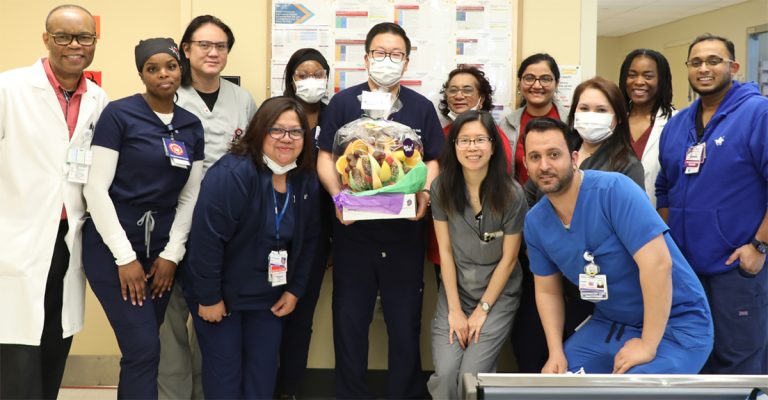Report on the Establishment of a Community Health Office in Brighton Beach
Introduction: A Strategic Initiative for Community Well-being
On July 17, 2025, MetroPlusHealth, in partnership with NYC Health + Hospitals/South Brooklyn Health, inaugurated a new community office at 225 Brighton Beach Avenue, Brooklyn. This initiative represents a significant effort to enhance healthcare accessibility and address critical social determinants of health, directly aligning with several United Nations Sustainable Development Goals (SDGs).
Alignment with Sustainable Development Goals (SDGs)
The establishment of the Brighton Beach community office is a targeted intervention designed to advance the following SDGs:
SDG 3: Good Health and Well-being
The office’s primary function is to improve health outcomes for the South Brooklyn community, which exhibits higher-than-average rates of chronic disease. Key contributions include:
- Expanding access to affordable health insurance enrollment and guidance.
- Providing resources for chronic condition management, including diabetes, hypertension, and heart disease.
- Offering preventative care services and regular health screenings to proactively manage community health.
- Facilitating access to mental and behavioral health services, including therapy referrals and crisis support, to address rising needs.
SDG 10: Reduced Inequalities
A core objective of the initiative is to mitigate health disparities prevalent within the local population. The office addresses this goal by:
- Focusing on a community with documented lower life expectancies compared to citywide averages.
- Employing multilingual staff fluent in English, Russian, Ukrainian, Urdu, Spanish, and Bengali to provide culturally competent care to diverse immigrant populations.
- Implementing targeted programs, such as quarterly wellness days, specifically for residents aged 65 and older.
SDG 1 & 2: No Poverty and Zero Hunger
The office serves as a resource hub to combat economic instability and food insecurity, which are fundamental barriers to good health. Services supporting these goals include:
- Partnerships to facilitate enrollment in the Supplemental Nutrition Assistance Program (SNAP).
- Monthly food distributions to provide direct nutritional support to residents.
- Free tax preparation programs to improve the financial stability of community members.
SDG 11, 16 & 17: Sustainable Communities, Strong Institutions, and Partnerships
This initiative strengthens the community fabric by fostering collaboration and building resilient local institutions. It advances these interconnected goals through:
- Sustainable Communities (SDG 11): Creating an inclusive and accessible community hub that provides essential services and fosters social connection.
- Strong Institutions (SDG 16): Establishing an effective and accountable access point for health and social services, strengthening the local public service infrastructure.
- Partnerships for the Goals (SDG 17): The project is founded on a strategic collaboration between MetroPlusHealth, the public entity NYC Health + Hospitals/South Brooklyn Health, and other local partners, exemplifying a multi-stakeholder approach to achieving development goals.
Operational Framework and Planned Services
The community office will function as a year-round center for care and connection, offering a comprehensive schedule of programs designed to meet the holistic needs of the community. Scheduled activities include:
- Weekly community events and health screenings
- Monthly food distributions
- Digital health education via Facebook Live sessions with specialists
- Cultural recognition events
- Quarterly wellness and spa days for senior residents
- Free tax preparation assistance
- Community meet-and-greets with elected officials
- SNAP enrollment support
Conclusion
The new MetroPlusHealth community office in Brighton Beach is a multifaceted project that moves beyond traditional healthcare delivery. By integrating health services with social and economic support systems, the initiative provides a comprehensive model for urban community development. Its strong alignment with the Sustainable Development Goals, particularly in the areas of health, inequality reduction, and partnership, positions it as a significant contributor to the long-term well-being and resilience of the South Brooklyn community. The office operates Monday through Friday from 9am to 6pm and Saturdays from 9am to 5pm.
Analysis of Sustainable Development Goals in the Article
1. Which SDGs are addressed or connected to the issues highlighted in the article?
The article on the opening of the MetroPlusHealth community office in Brighton Beach addresses several Sustainable Development Goals (SDGs) by focusing on community health, access to services, and reducing inequalities.
- SDG 3: Good Health and Well-being: This is the primary goal addressed. The article’s central theme is expanding access to healthcare services, including preventative care, chronic condition management, and mental health support, to ensure healthy lives for the community.
- SDG 1: No Poverty: The initiative connects to this goal by offering services that alleviate financial burdens, such as free tax preparation programs and assistance with SNAP enrollment, which are social protection measures for the vulnerable.
- SDG 2: Zero Hunger: The article explicitly mentions “monthly food distributions” and “SNAP enrollment partnerships,” which are direct actions to combat hunger and improve food security for residents.
- SDG 10: Reduced Inequalities: The office aims to reduce health disparities by providing culturally competent care. It specifically targets a diverse community, including elderly and immigrant populations, with multilingual staff to ensure inclusive access for all, irrespective of origin or age.
- SDG 17: Partnerships for the Goals: The article highlights the collaboration between MetroPlusHealth, NYC Health + Hospitals/South Brooklyn Health, and other local community partners, demonstrating a multi-stakeholder partnership to achieve common goals.
2. What specific targets under those SDGs can be identified based on the article’s content?
Based on the services and objectives described in the article, several specific SDG targets can be identified:
- Target 3.4: By 2030, reduce by one-third premature mortality from non-communicable diseases through prevention and treatment and promote mental health and well-being.
- The article supports this by stating the office will help manage chronic conditions like “diabetes, hypertension, and heart disease” and provide “behavioral health referrals,” “therapy services,” and “crisis support.”
- Target 3.8: Achieve universal health coverage, including financial risk protection, access to quality essential health-care services and access to safe, effective, quality and affordable essential medicines and vaccines for all.
- The office directly works towards this by offering an “affordable health care plan,” “insurance enrollment information and support,” and serving as a “central access point” for essential health services.
- Target 1.3: Implement nationally appropriate social protection systems and measures for all…and achieve substantial coverage of the poor and the vulnerable.
- The provision of “SNAP enrollment partnerships” and “free tax preparation programs” are examples of implementing social protection systems to support vulnerable community members.
- Target 2.1: By 2030, end hunger and ensure access by all people, in particular the poor and people in vulnerable situations…to safe, nutritious and sufficient food all year round.
- The “monthly food distributions” and assistance with SNAP enrollment are direct actions aimed at ensuring the community has access to food.
- Target 10.2: By 2030, empower and promote the social, economic and political inclusion of all, irrespective of age, sex, disability, race, ethnicity, origin, religion or economic or other status.
- The office promotes inclusion by employing “multilingual representatives fluent in English, Russian, Ukrainian, Urdu, Spanish and Bengali” to serve diverse immigrant populations and by offering specific programs like “wellness and spa days for residents aged 65+.”
- Target 17.17: Encourage and promote effective public, public-private and civil society partnerships.
- The initiative is a collaboration between “MetroPlusHealth, NYC Health + Hospitals/South Brooklyn Health and other local community partners,” which exemplifies the type of partnership this target promotes.
3. Are there any indicators mentioned or implied in the article that can be used to measure progress towards the identified targets?
The article mentions or implies several quantitative and qualitative indicators that can be used to track progress:
- For Target 3.4 (Health Outcomes):
- Mentioned: Higher-than-average rates of diabetes, hypertension, and heart disease in South Brooklyn serve as a baseline indicator. Progress could be measured by a reduction in these rates over time.
- Implied: The number of residents receiving support for chronic condition management and the number of behavioral health referrals made.
- For Target 3.8 (Health Coverage):
- Mentioned: The opening of a new community office is an indicator of increased service availability. The total number of members served by MetroPlusHealth (“nearly 700,000”) provides context for scale.
- Implied: The number of individuals who receive insurance enrollment assistance and successfully enroll in a health plan.
- For Target 2.1 (Food Security):
- Implied: The number of individuals or families served through the “monthly food distributions” and the number of successful “SNAP enrollments” facilitated by the office.
- For Target 10.2 (Inclusion):
- Mentioned: The number of languages spoken by staff (six are listed), indicating the capacity to serve diverse linguistic groups.
- Implied: The number of residents aged 65+ participating in wellness days and the number of individuals from various ethnic communities accessing the office’s services.
4. Summary of SDGs, Targets, and Indicators
| SDGs | Targets | Indicators |
|---|---|---|
| SDG 3: Good Health and Well-being | 3.4: Reduce mortality from non-communicable diseases and promote mental health.
3.8: Achieve universal health coverage. |
|
| SDG 1: No Poverty | 1.3: Implement social protection systems for the poor and vulnerable. |
|
| SDG 2: Zero Hunger | 2.1: End hunger and ensure access to sufficient food for all. |
|
| SDG 10: Reduced Inequalities | 10.2: Promote the social and economic inclusion of all. |
|
| SDG 17: Partnerships for the Goals | 17.17: Encourage effective public, public-private and civil society partnerships. |
|
Source: nychealthandhospitals.org







